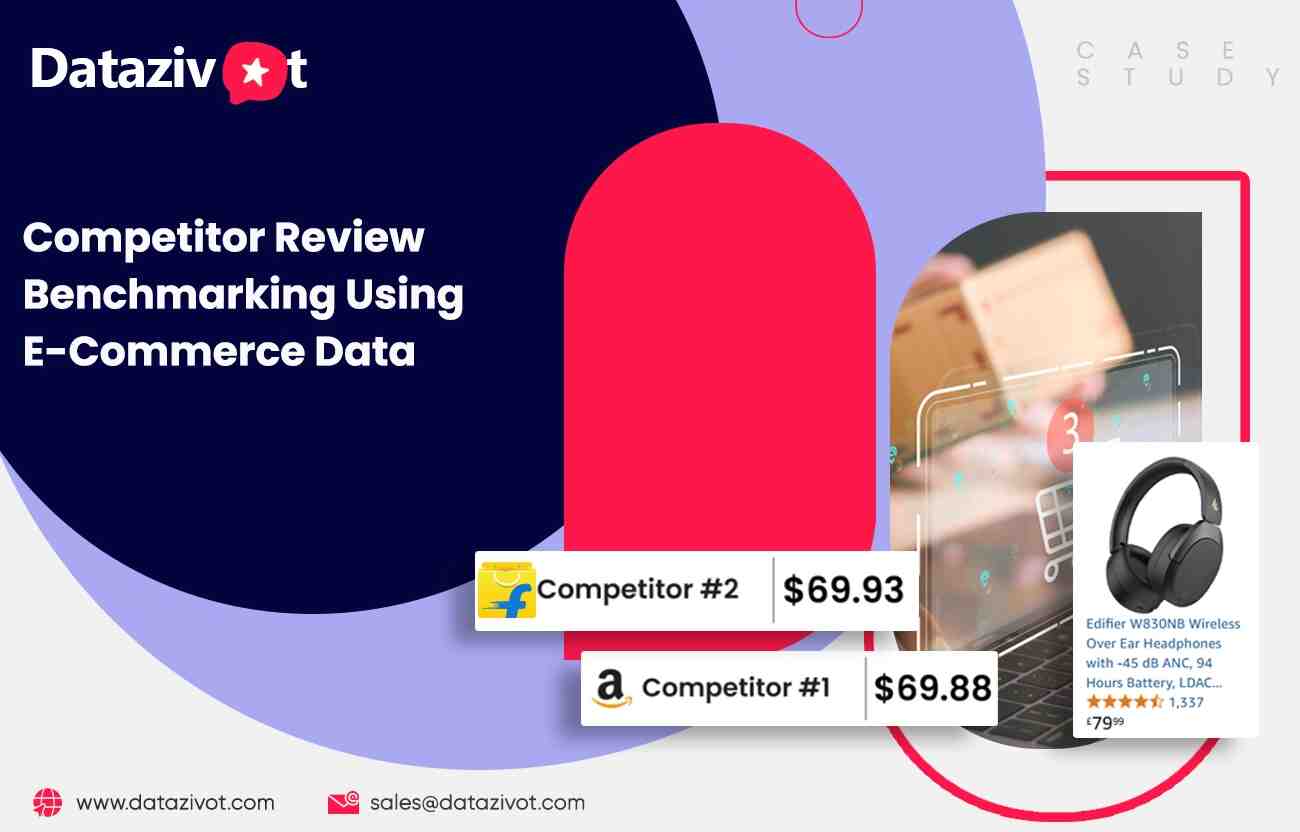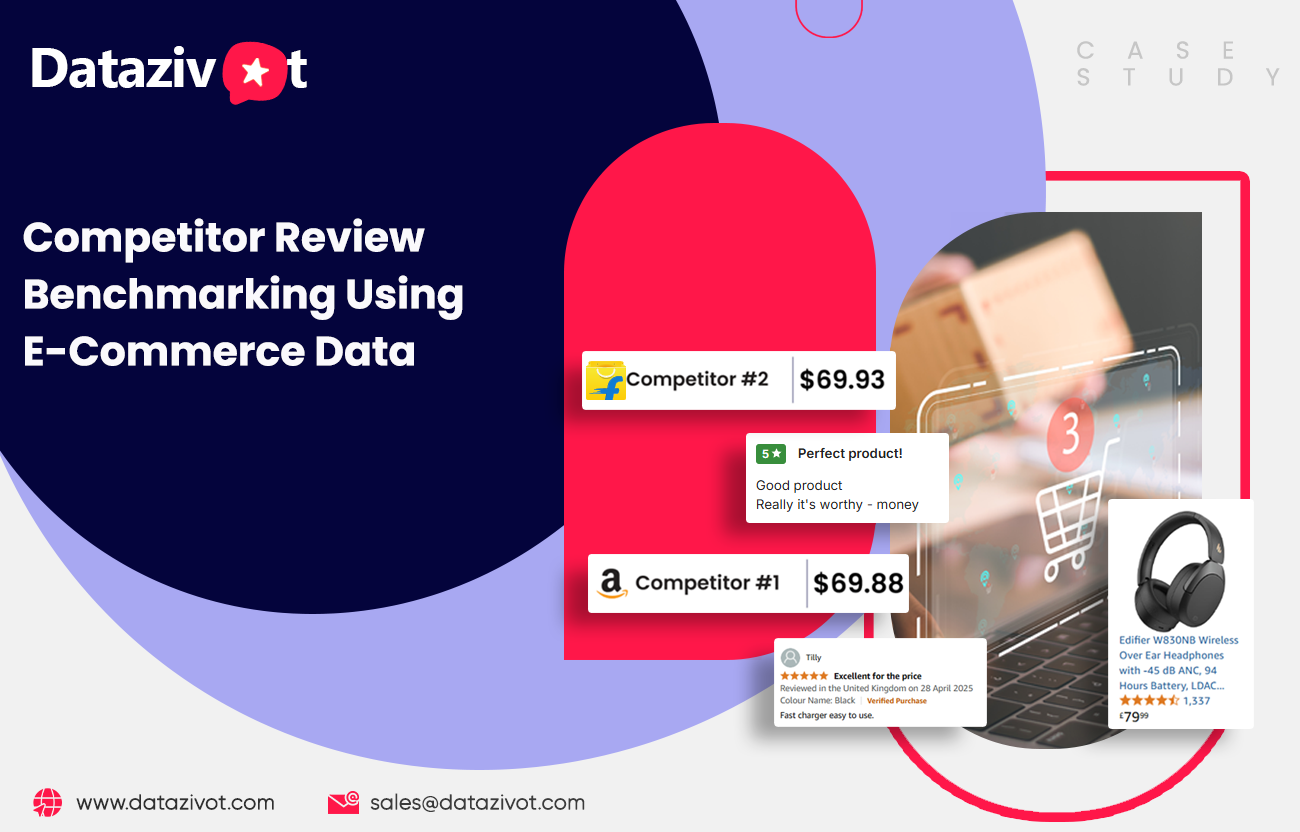
Business Challenge
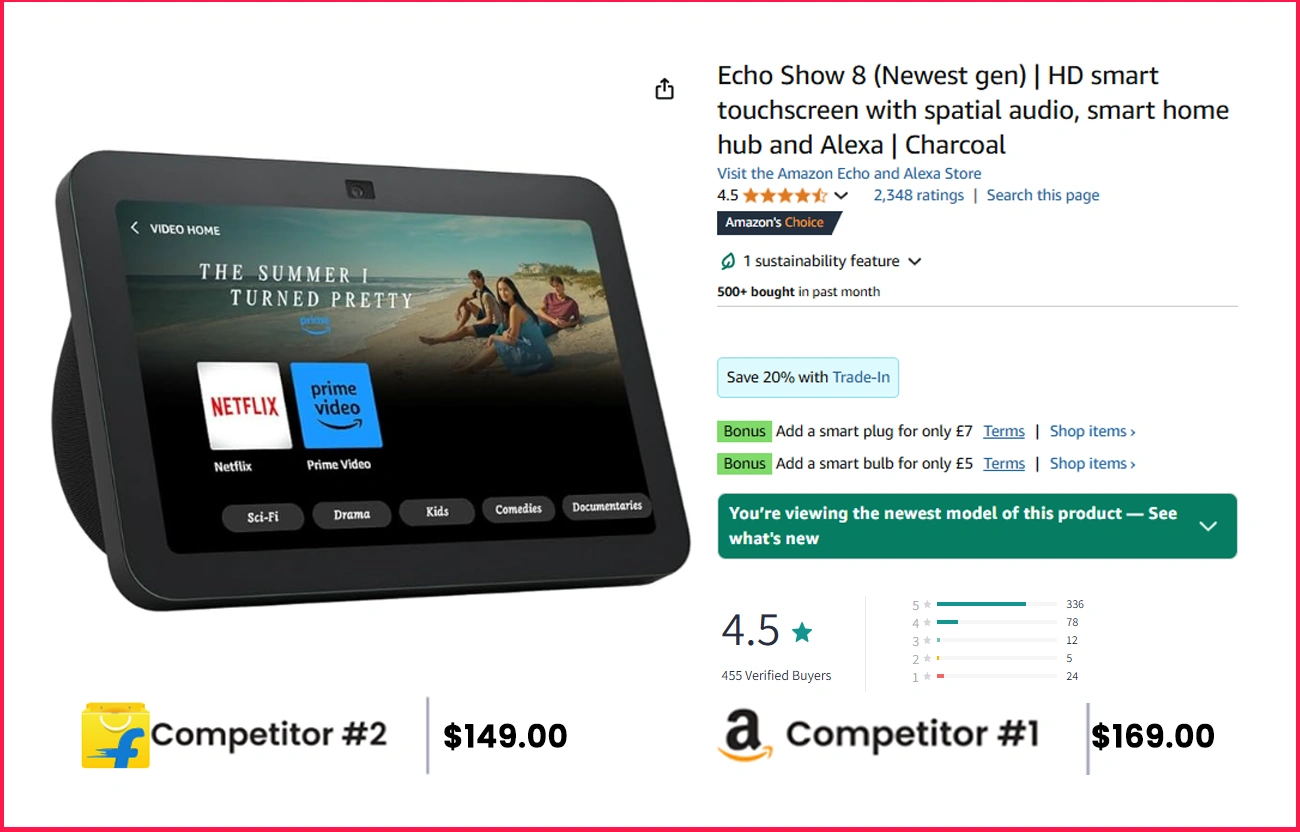
A leading electronics manufacturer wanted to know:
“Why are our competitors rated higher on Flipkart despite similar specs and pricing?”
The client had solid sales on Amazon but was underperforming on Flipkart and Myntra compared to two competing brands.
They needed Datazivot to:
- Scrape and analyze public reviews of top 3 competitors.
- Benchmark sentiment, feature-level praise/criticism, and review volume.
- Identify gaps in consumer perception and actionable branding cues.
Objectives
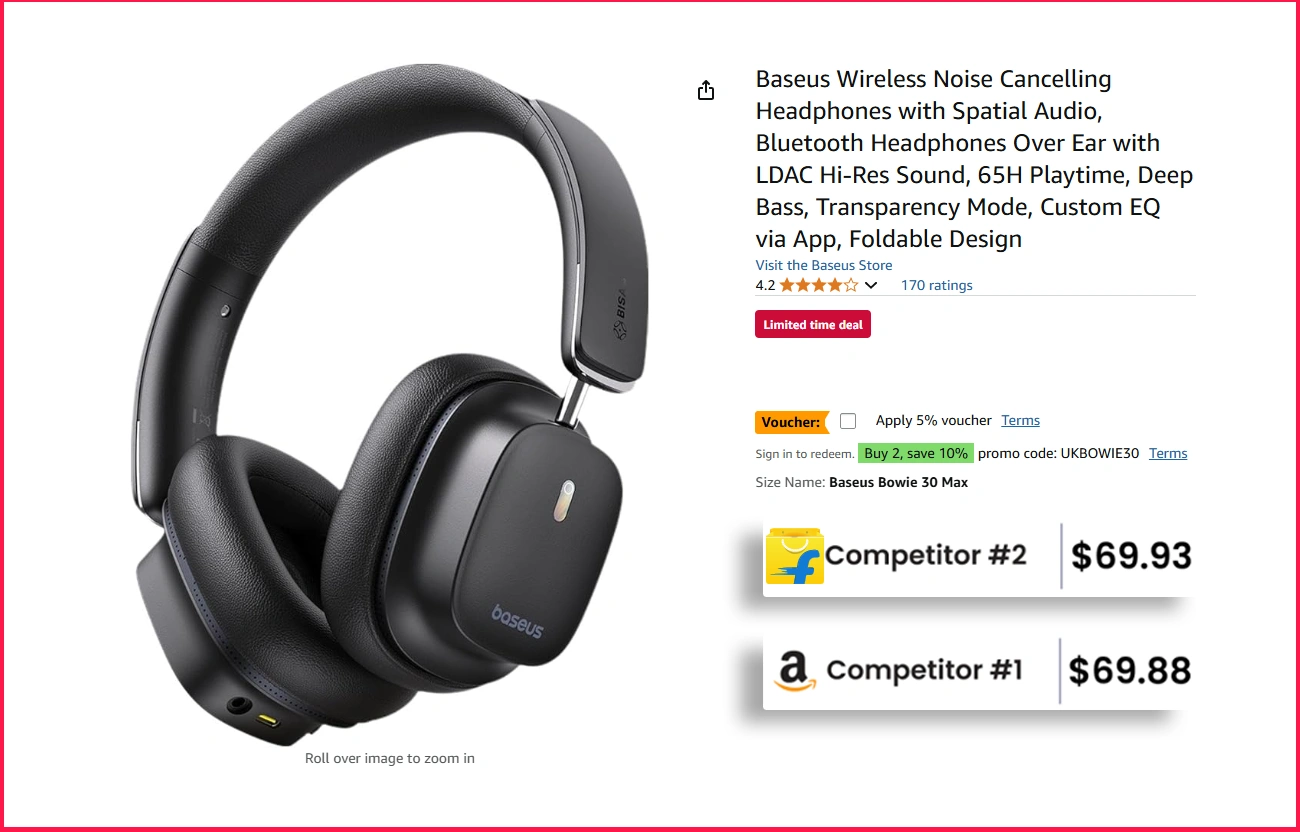
Datazivot’s goals were:
- Scrape 3,00,000+ reviews for smartphones and audio devices across 6 months.
- Classify review sentiment and extract feature-based insights (battery, delivery, UI, sound quality).
- Compare Brand A (client) vs Brand B and Brand C (competitors) across Amazon, Flipkart, and Myntra.
- Deliver strategic positioning recommendations.
Our Approach
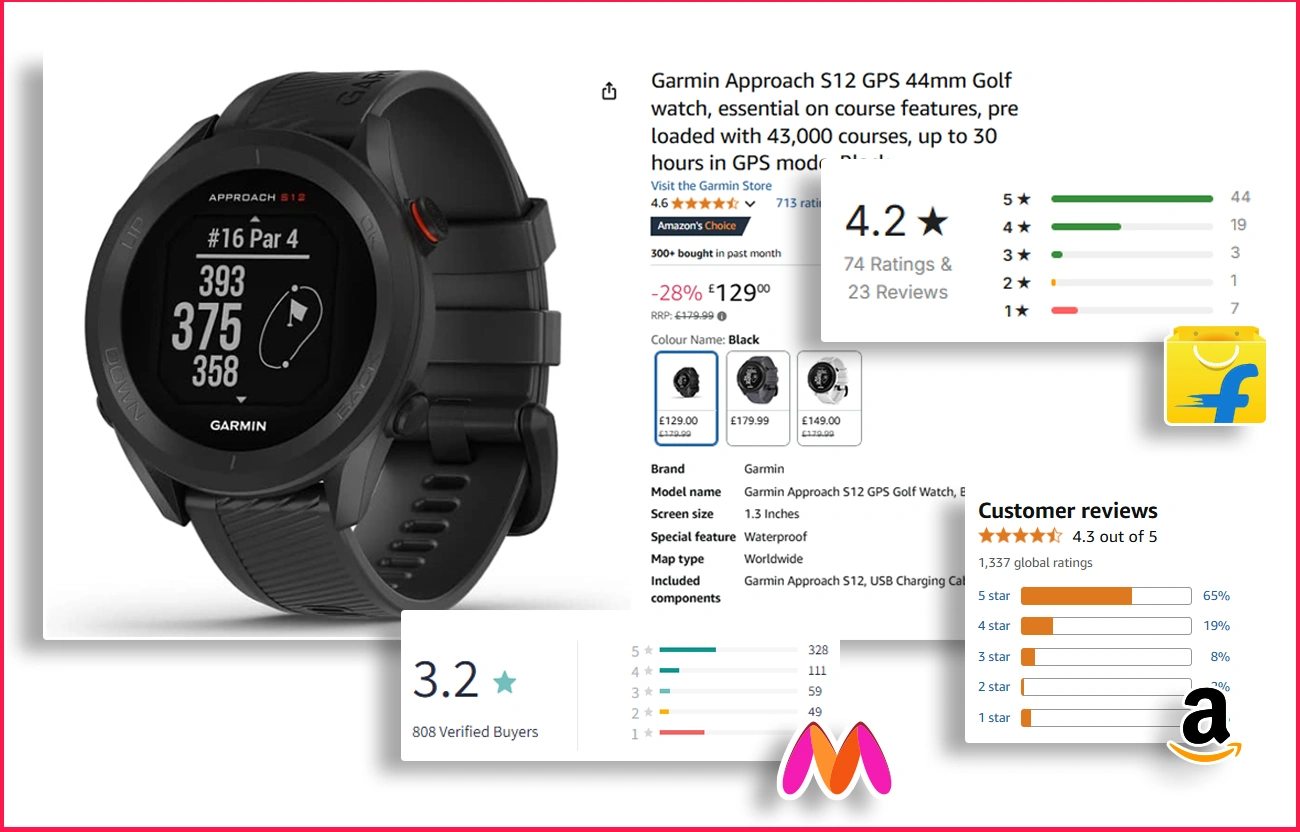
1. Review Scraping
We collected structured review data from:
- Amazon India – All electronic SKUs under ₹15,000
- Flipkart – Top 50 bestsellers in smartphones and Bluetooth headphones
- Myntra – Niche lifestyle audio devices with fashion appeal
Captured fields:
- Product Name
- Brand
- Review Date
- Star Rating
- Review Body
- Sentiment Score
- Review Source (Amazon, Flipkart, Myntra)
2. Sentiment and Feature Tagging
We applied:
- Aspect-Based Sentiment Analysis (ABSA) to detect opinions about specific product features.
- Comparative Phrase Detection to find statements like “better than X” or “worse than Y.”
This provided qualitative and quantitative insights about how Brand A compared to its competitors.
Sample Data Snapshot
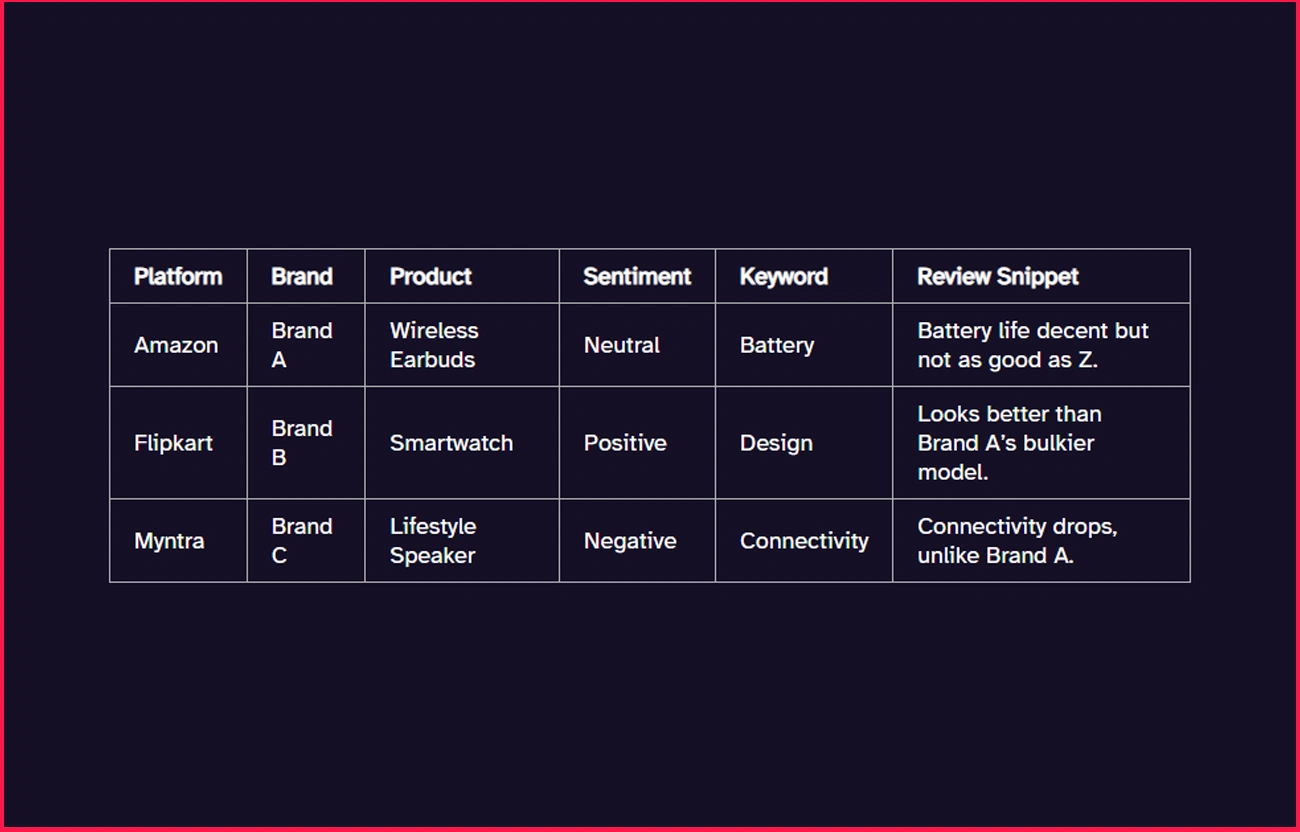
Results & Competitive Insights
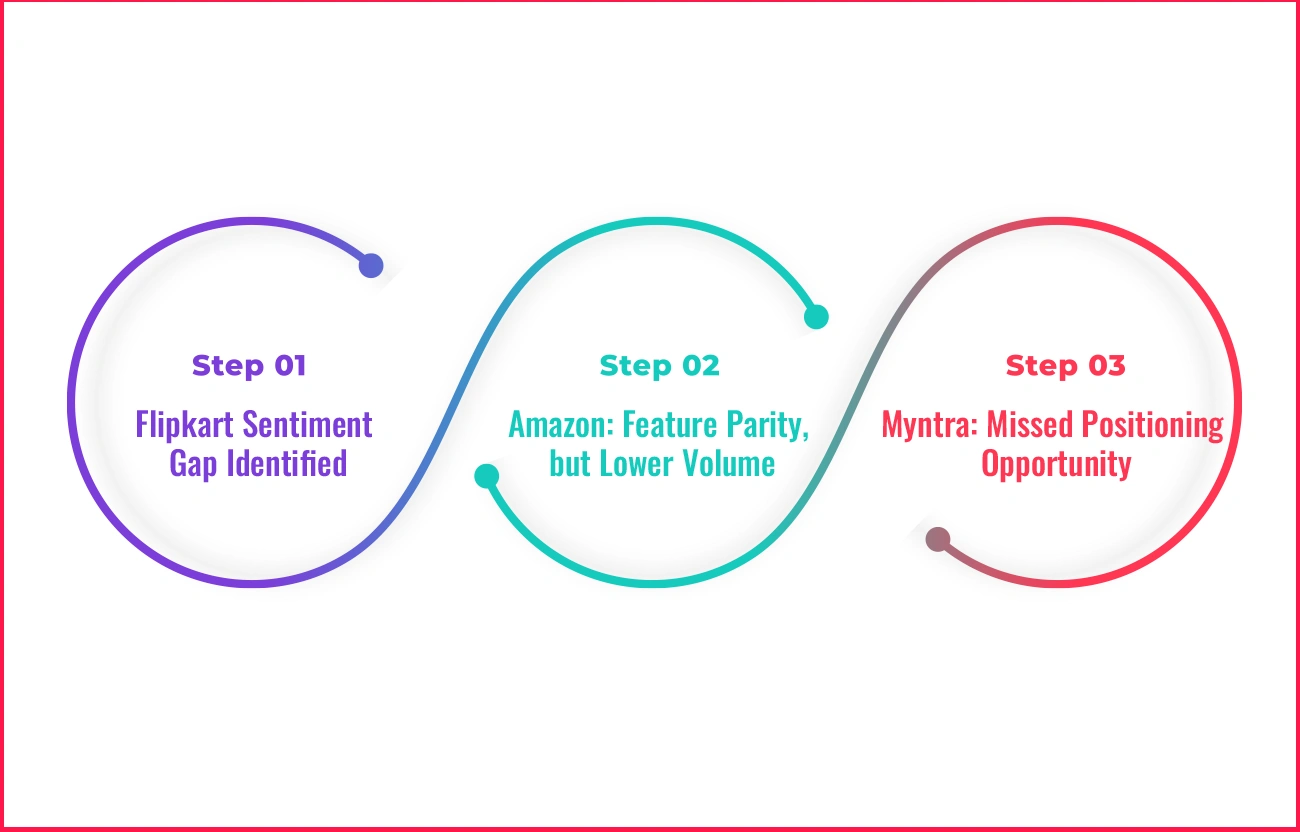
1. Flipkart Sentiment Gap Identified
- Brand A: 61% positive, 23% neutral, 16% negative
- Brand B: 78% positive, 15% neutral, 7% negative
Flipkart users praised Brand B for sleek design and fast delivery. Brand A lacked visibility in those feature mentions.
2. Amazon: Feature Parity, but Lower Volume
- Brand A had similar average ratings (4.2/5) but significantly fewer reviews than competitors, hurting algorithmic ranking.
Action: Incentivized verified buyers to leave reviews, increasing review count by 28% in 2 months.
3. Myntra: Missed Positioning Opportunity
- Brand C leveraged “lifestyle appeal” in fashion+tech, dominating positive sentiment.
- Brand A did not highlight aesthetics in product titles or visuals.
Action: Client repositioned select SKUs with visual campaigns focused on “wearable appeal.”
Dashboard Highlights
Top Competitor Features (Brand B on Flipkart):
- Design: 4.8/5 average sentiment
- Battery: 4.5/5
- Value for Money: 4.6/5
Negative Review Themes for Brand A:
- “Late delivery”
- “Overheating after 2 hrs”
- “Packaging was average”
Cross-Platform Performance (Last 90 Days):
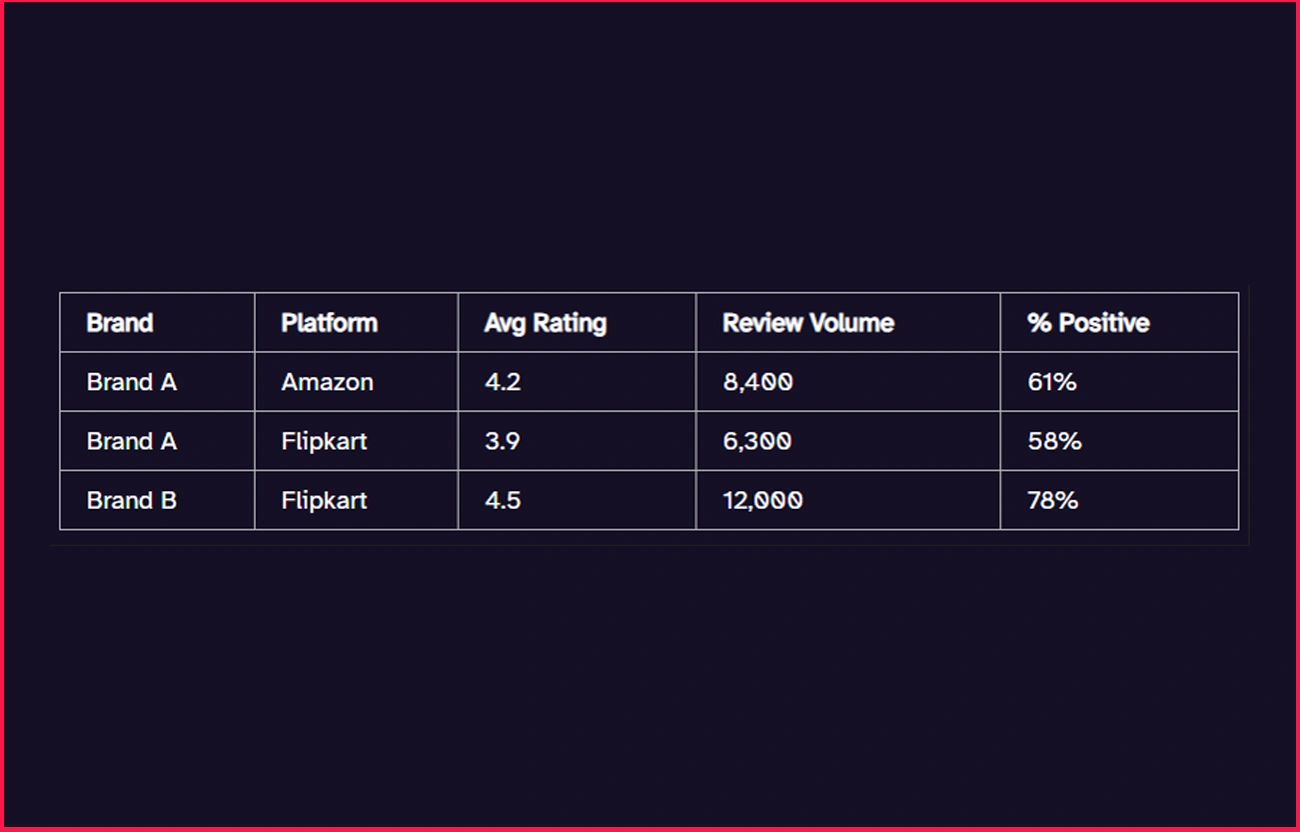
Tools & Stack
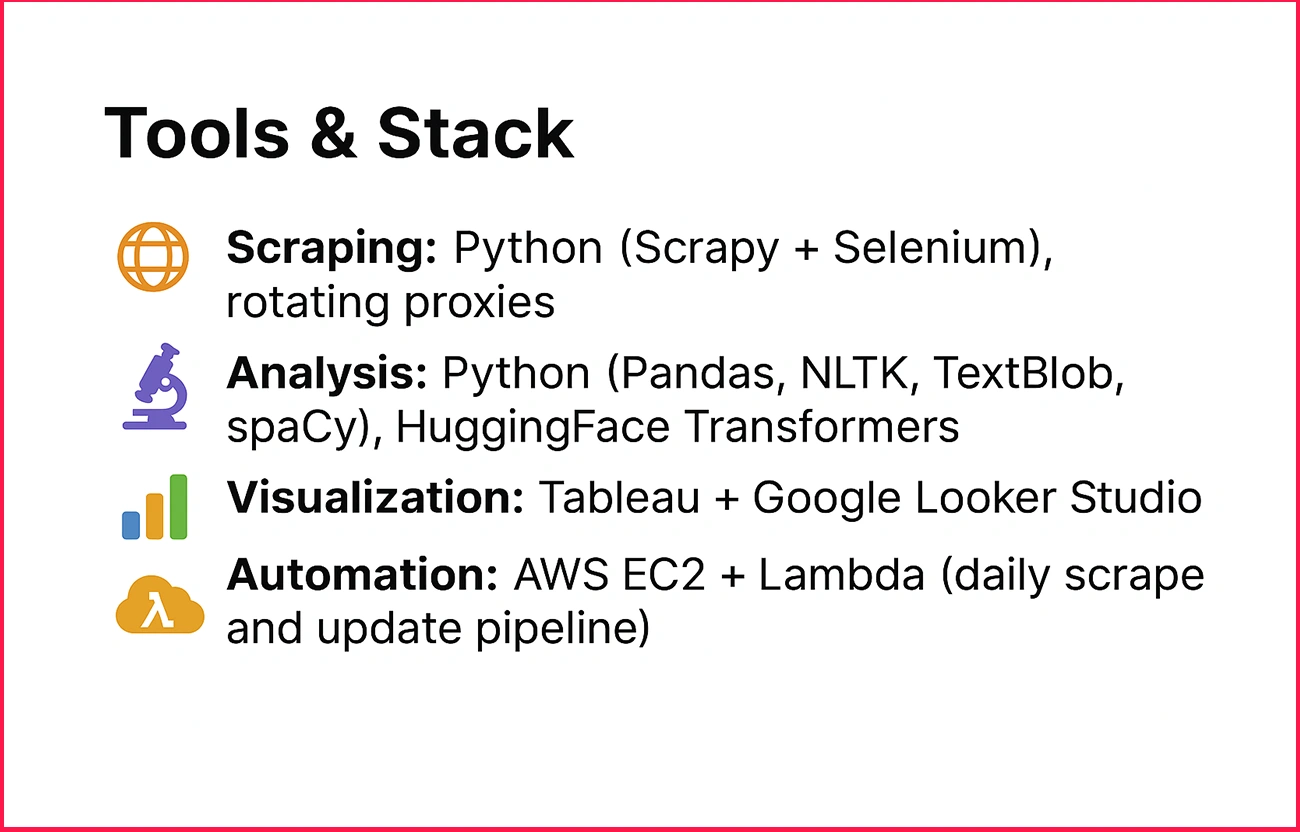
- Scraping: Python (Scrapy + Selenium), rotating proxies
- Analysis: Python (Pandas, NLTK, TextBlob, spaCy), HuggingFace Transformers
- Visualization: Tableau + Google Looker Studio
- Automation: AWS EC2 + Lambda (daily scrape and update pipeline)
Strategic Outcome
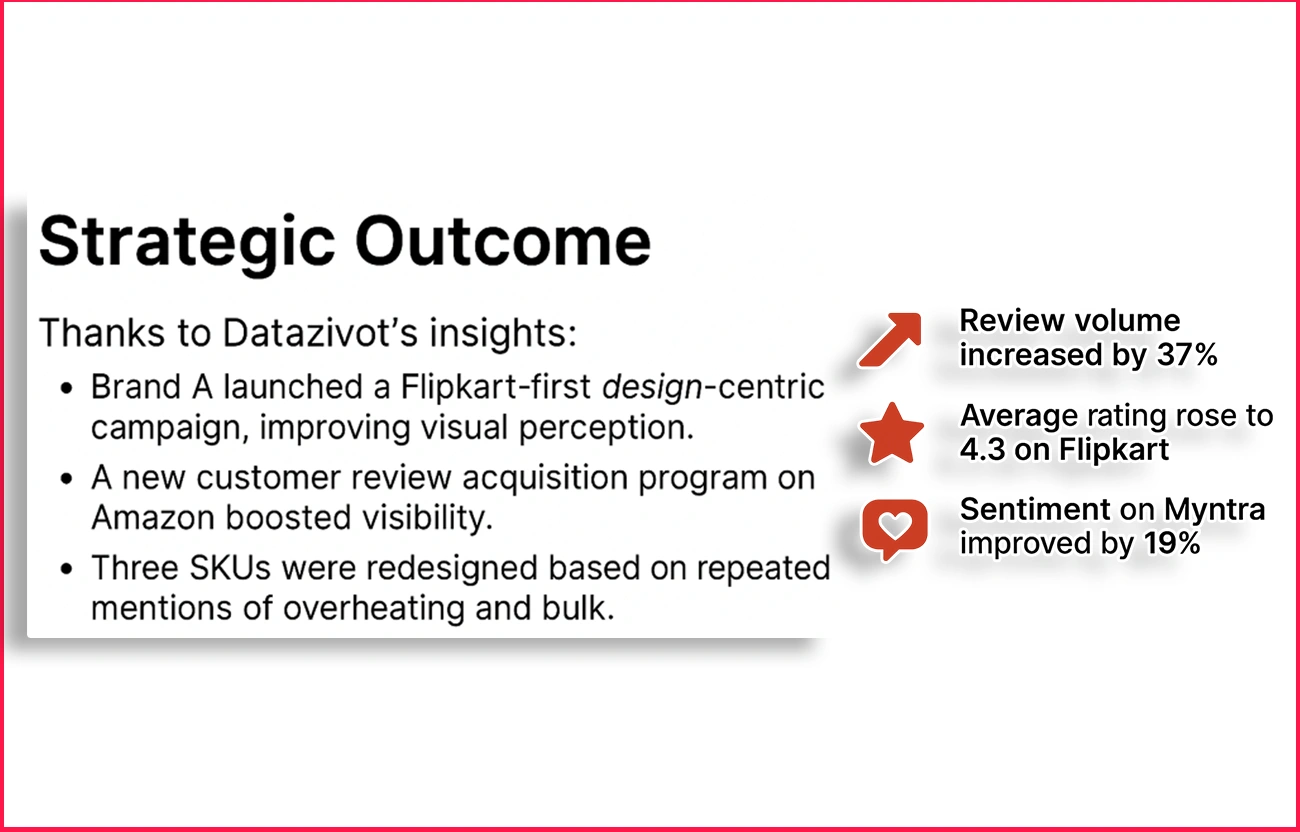
Thanks to Datazivot’s insights:
- Brand A launched a Flipkart-first design-centric campaign, improving visual perception.
- A new Customer review acquisition program on Amazon boosted visibility.
- Three SKUs were redesigned based on repeated mentions of overheating and bulk.
Within 90 days:
- Review volume increased by 37%
- Average rating rose to 4.3 on Flipkart
- Sentiment on Myntra improved by 19%
Conclusion
Through deep Competitor review analysis, Datazivot helped Brand A find out not just what people were saying, but what they were saying about competitors. This changed how the client viewed benchmarking—not just specs, but perception as data.

